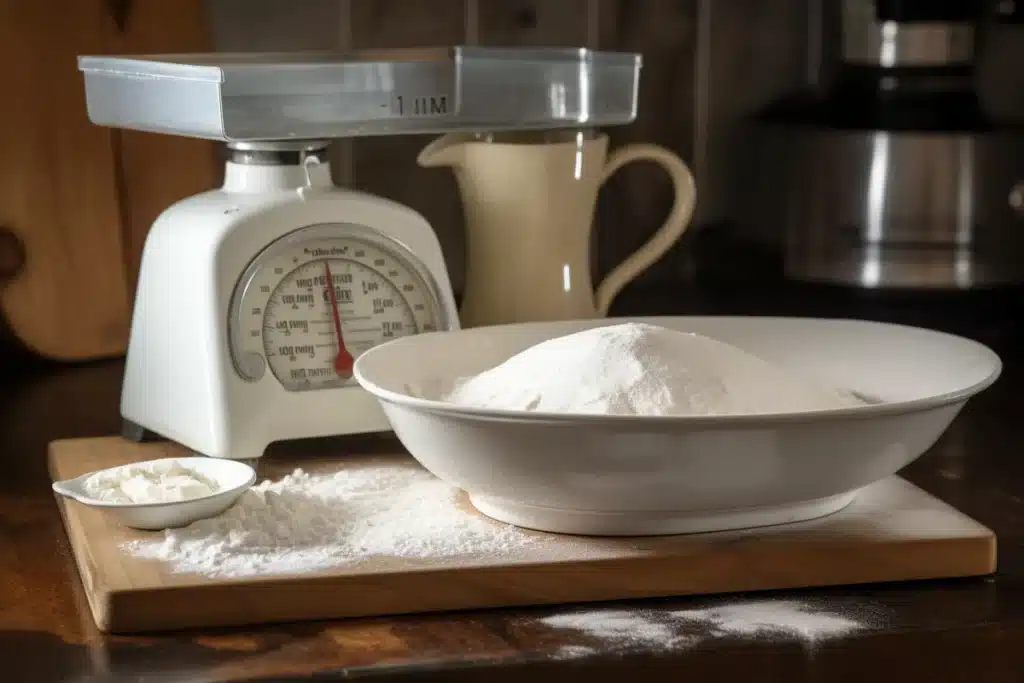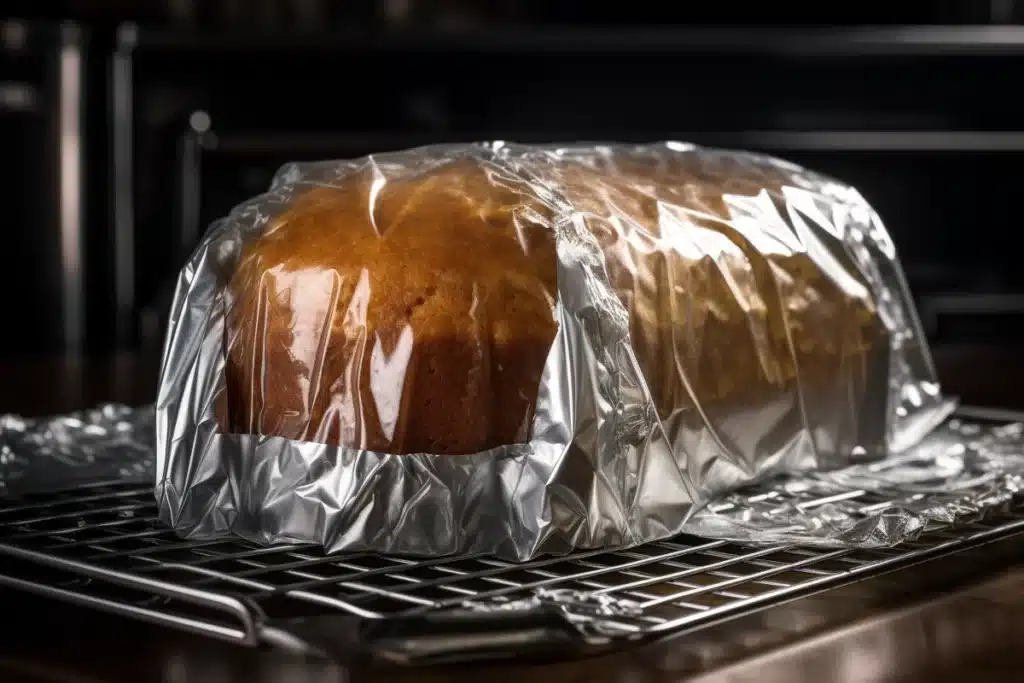Keeping pound cake moist is simple with the right methods. This article will explore all the best ways to achieve a perfectly moist and delicious result every time you bake.
The Science Behind a Moist Pound Cake
Understanding the science helps keep pound cake moist. Firstly, moisture loss occurs during baking. Secondly, the ingredients affect the cake’s final texture. Therefore, proper techniques are key. Consequently, using the right methods ensures a moist outcome.
The Role of Fat in Keeping Pound Cake Moist
Fat is vital for a moist cake. Butter, for example, contributes to richness and moisture. Furthermore, fats hinder gluten development. This results in a tender crumb. In addition, fats coat the flour. Therefore, this prevents the cake from drying out. Indeed, consider the type of fat used, as each has unique qualities. Specifically, using a combination of melted butter and oil may give a superior result, in terms of moisture.

Sugar’s Importance for Moisture Retention
Sugar is another crucial element. Specifically, sugar attracts water. It therefore helps retain moisture within the cake. Also, sugar interacts with proteins. This creates a softer texture. Indeed, the right sugar quantity is very important. Consequently, different sugars offer different benefits. For example, using a mix of white and brown sugar can provide extra depth of flavor, and enhanced moisture retention.
The Right Baking Temperature Matters
Correct baking temperature is key. Too high heat causes rapid moisture loss. For example, it creates a dry crust. Conversely, too low heat prevents proper rising. Consequently, sticking to the recommended temperature is essential. Furthermore, using an oven thermometer will help ensure you have the correct temperature. This will prevent hot spots and ensure an even bake.
Best Baking Practices for a Moist Pound Cake
Following best practices will help maintain pound cake moist. It’s all about the techniques, after all. Here are some very useful tips to follow.

Measuring Ingredients Accurately
Accurate measurements are essential. For instance, too much flour can lead to dryness. On the other hand, not enough liquid can also cause this. Accordingly, use a kitchen scale for precision. Similarly, spoon flour into measuring cups to avoid packing. Indeed, precise measurements are crucial. Consequently, slight variations can greatly impact the outcome of your cake.
The Importance of Room Temperature Ingredients
Room temperature ingredients matter a lot. For example, room temperature butter creates a smoother batter. Additionally, room temperature eggs emulsify better. Therefore, this contributes to a softer, more even texture in the cake. Furthermore, room temperature ingredients mix together faster and more completely. This creates an even emulsion, which contributes to a moist and tender cake.
Avoiding Overmixing the Batter
Overmixing develops gluten. Consequently, it causes a tough cake. Instead, mix until ingredients are just combined. Furthermore, use a folding motion when adding dry ingredients. Therefore, gently handling the batter is the way to go. Specifically, using a spatula to fold in the ingredients will help keep the batter from being overmixed. In addition, this ensures a light and airy texture.
How to Prevent Overbaking for a Moist Cake
Overbaking is a common pitfall. This causes moisture loss. Additionally, the cake will become dry and crumbly. Hence, use a toothpick to check for doneness. Furthermore, the toothpick should come out with just a few moist crumbs. The cake is ready when this happens. Therefore, start checking for doneness a bit earlier than the recipe indicates. This will help avoid overbaking.
Techniques After Baking to Keep Pound Cake Moist
Proper care after baking is key. This preserves the moisture. Here are some effective post-baking tips.

The Proper Cooling Process is Vital
Allow the cake to cool in the pan. This prevents damage. Specifically, cool for at least 15 minutes before inverting it onto a wire rack. Furthermore, avoid cutting the cake while it is still warm. This helps retain the moisture. Moreover, the cooling process is crucial for the cake to set properly. Consequently, cooling it slowly prevents condensation and ensures the cake doesn’t become soggy.
Wrapping the Cake Properly After Baking
Wrapping the cake while it’s slightly warm is a great tip. First, wrap it in plastic wrap. Then, use a layer of aluminum foil. This locks in moisture. Indeed, this prevents the cake from drying out. Furthermore, ensure the wrap is airtight, which will prevent moisture from escaping. Indeed, a proper wrapping will prolong the shelf life of the cake.
Storing Your Pound Cake to Retain Moisture
Store the cake in an airtight container. This preserves the moisture and freshness. Additionally, you can add a slice of bread to the container. This helps to absorb excess moisture and keep the cake soft. Consequently, it keeps the cake moist. Furthermore, you can also add a piece of apple. Both are great at absorbing excess moisture.
The Science of Moist Pound Cake: Ingredients and Their Roles
Different ingredients will affect how moist the pound cake is. Knowing what role each plays is important. This helps make adjustments as needed.
Choosing the Right Type of Fat
Butter and shortening both contribute to a moist texture. Butter adds flavor. Shortening, on the other hand, creates a more tender cake. Indeed, you can use a combination of both. This is for an optimal result. Additionally, consider using unsalted butter for better control of the flavor. The type of fat you choose really does impact the final result.
Understanding the Impact of Different Sugars
Granulated sugar, brown sugar, and honey each have different properties. Specifically, brown sugar adds moisture because of its molasses content. Consequently, it also gives a richer flavor. Therefore, understanding sugar’s role is important. Furthermore, using honey will add not only moisture but also a distinct flavor. It’s a great way to enhance the richness of the cake.
How Eggs Affect Pound Cake Moisture
Eggs not only add structure, but also moisture. Their proteins also help bind the ingredients. Furthermore, their fats contribute to a tender texture. Consequently, using the correct amount is very important. Moreover, the yolks add richness and fat, which makes the cake moist. However, using too many eggs can lead to a cake that’s too dense and heavy.
The Right Flour for a Moist Texture
Cake flour has a lower protein content than all-purpose flour. This creates a more tender crumb. Thus, using cake flour will keep your pound cake moist. However, if you don’t have cake flour, you can use all-purpose flour with a little bit of cornstarch. Indeed, this substitution works quite well. Therefore, consider sifting the flour to create an even lighter texture.
Avoiding Common Mistakes that Lead to a Dry Pound Cake
Several common errors can result in a dry pound cake. Knowing these will help you avoid them.
Common Baking Errors that Cause Dryness
Overbaking is a major reason for dry cakes. Additionally, too high of heat can also cause a loss of moisture. It’s very important to check for doneness frequently. In addition, accurate ingredient measuring is key. Furthermore, keep an eye on your oven temperature, as it can fluctuate. Consequently, always use an oven thermometer.
Incorrect Storage Practices that Dry Out Cake
Improper storage is another common error. Leaving the cake unwrapped allows it to dry out. Also, placing it in the fridge will further dry out the cake. Therefore, keeping the cake sealed in an airtight container is crucial. Moreover, avoid storing the cake in direct sunlight. This will help keep your pound cake moist.
Adjusting Your Recipe for Optimal Moisture
Adjusting your recipe can improve moisture. For instance, you can substitute some of the butter with oil. Also, adding a bit of sour cream or yogurt will enhance the cake’s texture. Experiment to find what works best for you. Furthermore, adding a touch of applesauce is also a great option. It adds extra moisture and a hint of natural sweetness.
How to Revive a Dry Pound Cake
If your cake becomes dry, there are still ways to revive it. For example, you can soak it with a simple syrup. Also, you can cover it with a moist topping. Furthermore, you can wrap the cake in a damp paper towel and reheat it gently. However, preventing dryness is always the best way. Indeed, sometimes a simple syrup can work magic, bringing life back to a dry cake.
Advanced Techniques for an Extra Moist Pound Cake
Advanced baking techniques enhance the moisture of your pound cake. These tips will help get you that perfect texture you are looking for.
Incorporating Buttermilk or Sour Cream
Buttermilk and sour cream are known for adding moisture. Their acidity also helps create a tender crumb. For example, substitute some of the liquid in your recipe. Indeed, you can get excellent results. Furthermore, these ingredients also add a subtle tang, which compliments the rich flavors of the cake. Specifically, using full-fat sour cream or buttermilk will yield the best results.
Adding a Simple Syrup After Baking
Brush the cake with a simple syrup. This adds extra moisture and sweetness. Consequently, this keeps the cake moist for days. The syrup will create a wonderful glaze as well. Indeed, this method is very effective. Furthermore, adding a bit of flavoring to your syrup, such as vanilla extract or lemon zest, will enhance its flavors.
Using a Water Bath While Baking
Baking the cake in a water bath will help create a humid environment. This slows down baking. As a result, this creates a more even texture. Furthermore, the cake remains moist. Therefore, this method is worth considering. Additionally, you need to make sure that the water doesn’t get inside the cake pan. Consequently, use enough foil to protect the bottom of the cake pan.
The Benefits of Resting the Batter
Allowing the batter to rest for a short time before baking can improve the moisture. This allows the flour to absorb the liquids. As a result, the cake is less likely to dry out during baking. Subsequently, this creates a better final texture. Furthermore, it can also help with the gluten development, which can result in a more tender cake.
Exploring Different Flavor Variations
Once you master the basics of keeping your pound cake moist, you can start experimenting with different flavors and variations. This can elevate your baking experience.
Adding Extracts and Zests for Flavor
Adding extracts such as vanilla, almond, or lemon can enhance the flavor of your cake. Additionally, using citrus zests like orange or lemon will add a fresh taste and aroma. Therefore, consider trying different flavor combinations. Furthermore, extracts should be added in moderation, as too much can be overpowering.
Incorporating Fruits and Nuts
Adding fruits like blueberries or raspberries will bring sweetness and extra moisture to your pound cake. Likewise, adding nuts such as almonds or walnuts will provide texture and flavor. Consequently, make sure to gently fold them in the batter. In addition, you can also use dried fruits, for a different flavor.
Swirling in Jams or Spreads
Swirling jams or fruit spreads through your cake batter will add visual appeal and pockets of extra moisture. For instance, raspberry or apricot jam works wonderfully. Therefore, gently swirl them with a knife. Furthermore, this technique gives extra flavor and keeps the pound cake moist.
Topping with Glazes and Frostings
Adding a simple glaze or frosting can add another layer of moisture and flavor. For example, a lemon glaze will complement a plain pound cake. Consequently, a cream cheese frosting will make the cake more decadent. Furthermore, a light dusting of powdered sugar is also a great option.
Troubleshooting Common Pound Cake Issues
Baking can sometimes present challenges. However, understanding common problems and their solutions can help you bake a better cake every time. Let’s address some common issues.
Why is My Pound Cake Crumbly?
A crumbly pound cake often results from overmixing or using too much flour. Also, low humidity can cause it. To avoid this, measure ingredients correctly, and don’t overmix. Furthermore, make sure to store your baked cake properly.
How to Fix a Dense Cake
A dense pound cake usually happens when the batter is overmixed or if the baking powder isn’t fresh. It is also possible that there is too much liquid in the recipe. Furthermore, use fresh leavening agents, such as baking powder, to ensure a light and fluffy texture.
What to Do if My Cake is Sinking
A sinking cake can result from too much leavening or too little baking time. Also, the oven could have been opened too soon. Furthermore, do not open the oven door during the first 2/3 of the baking time. This will help prevent sinking.
Avoiding a Dry Crust on Your Pound Cake
To avoid a dry crust, use the correct oven temperature and avoid overbaking. Also, you can try placing a pan of water in the oven. This helps create a humid environment. Furthermore, covering the cake with foil for the last part of the baking time can also be helpful.
The Importance of Quality Ingredients
The quality of your ingredients greatly impacts the final result of your pound cake. Using the best ingredients is always a good start.
Choosing High-Quality Butter and Eggs
Use good quality butter. This adds richer flavor. Similarly, fresh eggs provide better structure and moisture. Furthermore, opt for organic when possible. The use of high quality ingredients will enhance the final product.
The Impact of Fresh Flour
Fresh flour will give your pound cake a lighter texture. Always check the expiration dates. Moreover, if the flour is old, it may not perform as well. Therefore, properly store your flour in an airtight container.
The Importance of Using Good Vanilla Extract
Real vanilla extract enhances flavor. Avoid imitation vanilla. It’s worth investing in a good quality extract for your baking needs. Furthermore, it will give a more complex and rich flavor to your cake.
Sourcing the Right Sugar
The type of sugar you use will affect the final outcome. Try to use high-quality granulated or brown sugar. Furthermore, using a high quality sugar will improve the texture and flavor of the cake.
Conclusion: Mastering the Art of Keeping Pound Cake Moist
Keeping pound cake moist involves a combination of science and technique. By understanding the role of each ingredient, following the correct baking methods, and employing post-baking techniques, you will master the art of baking a moist and delicious cake every single time. For inspiration, check out this chocolate pound cake recipe for a rich and indulgent twist. Moreover, consider experimenting with new variations, once you have mastered the basics. Finally, enjoy your baking journey. The key is practice, and paying attention to the details.
Frequently Asked Questions About Keeping Pound Cake Moist
How do I keep my pound cake moist?
Keeping pound cake moist involves several steps. First, use the correct ratios of ingredients. Second, avoid overbaking. Third, wrap the cake tightly after baking. Finally, store the cake in an airtight container.
What is the trick to a moist cake?
The trick to a moist cake is using the proper ratio of wet to dry ingredients. Also, using fat like butter or oil is important. Furthermore, do not overmix the batter. Finally, it is important to not overbake the cake.
What makes a pound cake turn out dry?
A pound cake can turn out dry due to several reasons. Overbaking is a main factor. Moreover, inaccurate ingredient measurements cause dryness. Also, too much flour or not enough liquid can lead to a dry cake. Additionally, improper storage will dry the cake.
How do bakeries keep their cakes so moist?
Bakeries use several techniques to keep cakes moist. For example, they often use simple syrups. Also, they use high-quality ingredients. Additionally, they have climate-controlled storage. Furthermore, they may use additional fats in their recipes.


1 thought on “How to Keep Pound Cake Moist”